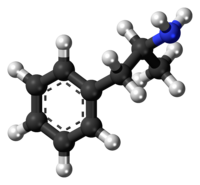
Photo from wikipedia
Abstract In this study, the beta dose given to oral epithelium was estimated from the activities of radionuclides 238U, 232Th, 226Ra and 40K in feldspathic and zirconium dioxide (ZrO2) dental… Click to show full abstract
Abstract In this study, the beta dose given to oral epithelium was estimated from the activities of radionuclides 238U, 232Th, 226Ra and 40K in feldspathic and zirconium dioxide (ZrO2) dental ceramics before and after the sintering process. They were measured using a well -type HPGe detector. 232Th activity is generally below the minimum detectable level of 1.6 Bq⋅kg−1 in all samples and 238U activity was far below the 1000 Bq⋅kg−1 limit stipulated by ISO 6872 standard. However, 226Ra activity was observed in all samples except for ZrO2 core samples ranged from 8.3 ± 1.1 to 105 ± 4 Bq⋅kg−1. Considerable 40K activity was observed in the feldspathic ceramic and ZrO2 veneer ceramic samples (between 1564 ± 48 Bq⋅kg−1 and 2703 ± 84 Bq⋅kg−1). The beta dose to oral epithelium tissue calculated from the measured activities was determined to be 1.5 mGy/y in a worse-case scenario in which all teeth were restored with dental ceramics. All results indicate that there is no concern about extra beta dose given to oral epithelium due to zirconia used as dental ceramics.
Journal Title: Radiation Physics and Chemistry
Year Published: 2020
Link to full text (if available)
Share on Social Media: Sign Up to like & get
recommendations!